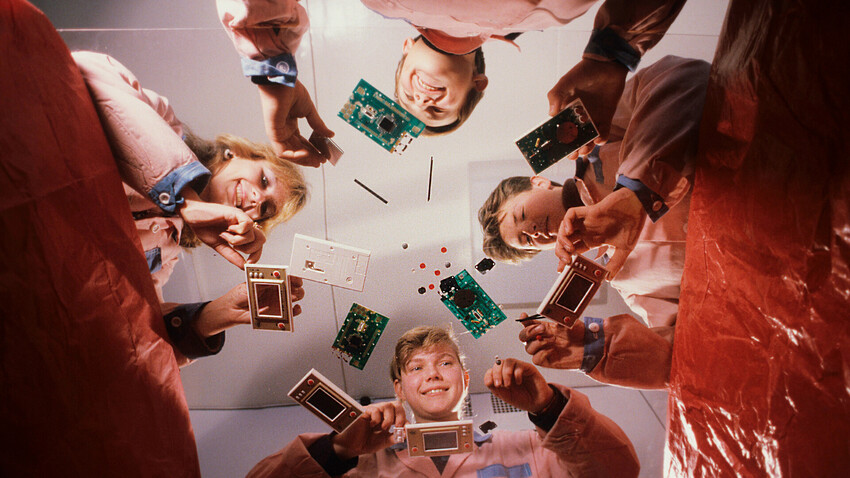
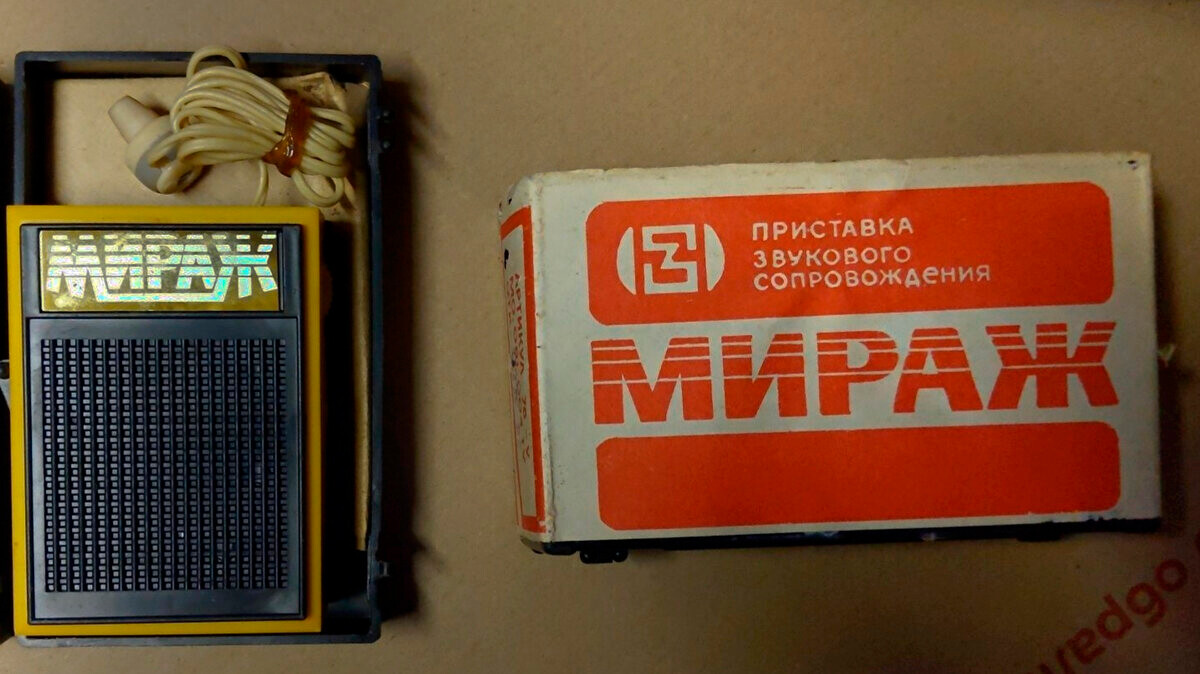
"Mirage' wireless headphone set
ArchiveThe ‘Mirage’ worked as follows: A wire antenna ring was inserted into a TV set, which became a transmitter of radio waves. The little console was equipped with a receiver and the signal was received within a radius of about 20 meters. The 200-gram box worked with a one and a half volt battery and the audio signal from it went to the earphone. Yes, by wire, but there were really no wires between the console box and the TV set.
The ‘Mirage’ was the first gadget in the USSR with a vacuum earpiece. The device was designed to watch TV regardless of any surrounding noise. In Soviet apartments, this was sometimes simply necessary – in the era of communal living, several people could live, study, do gymnastics and cook in one room at once.
The ‘Mirage’ was produced in Ivano-Frankivsk, Ukraine SSR, from 1975 until about the end of the 1980s, but this gadget was still very rare in the USSR. Most citizens never got the opportunity to even see one, let alone try or own one.
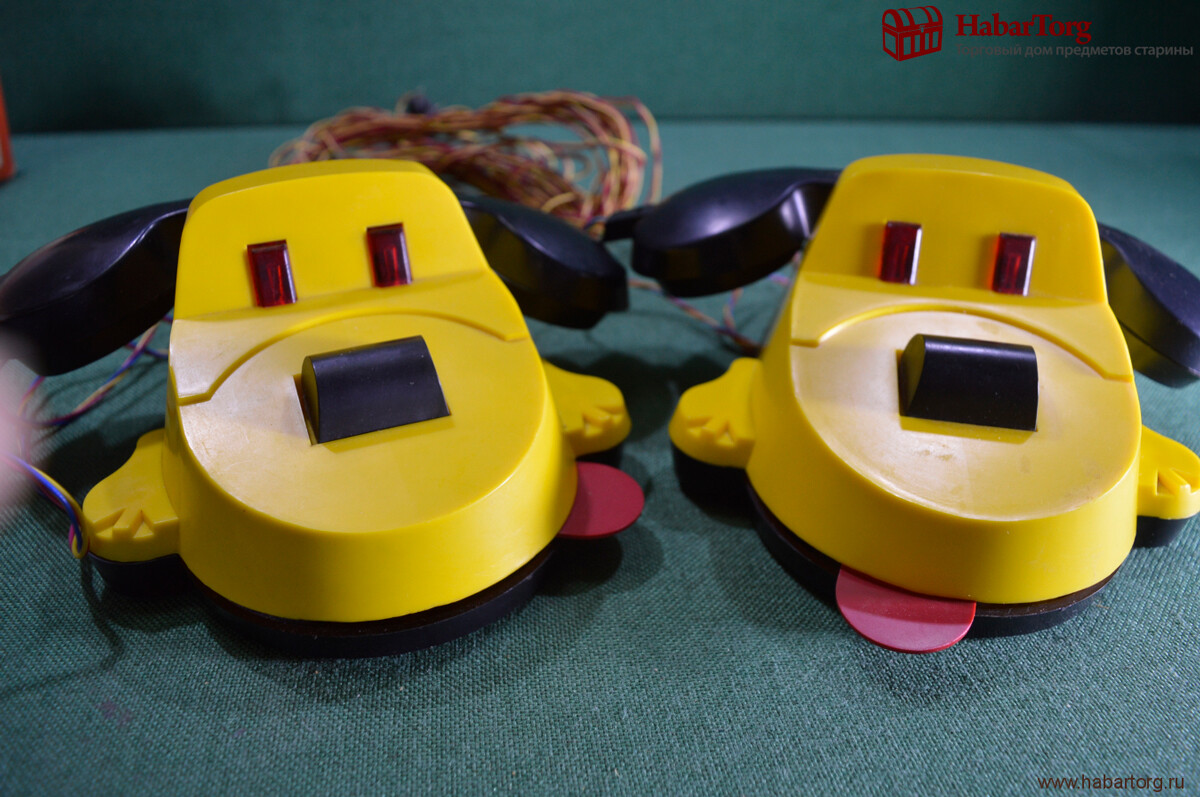
'Druzhok' ('Buddy') toy phone
habartorg.comThey were called differently: ‘Pereklichika-M’ (produced in Leningrad from 1985) or ‘Druzhok’ (produced from 1981 in Nizhny Novgorod). The latter device was made in the form of two cute puppies. The phones were powered by a battery in one of them.
The main disadvantage was the wire being only 10 meters long. It was only possible to talk on such phones while in different rooms of the same apartment – or, at best, by guiding the wire through a window and connecting with a lower or upper floor.
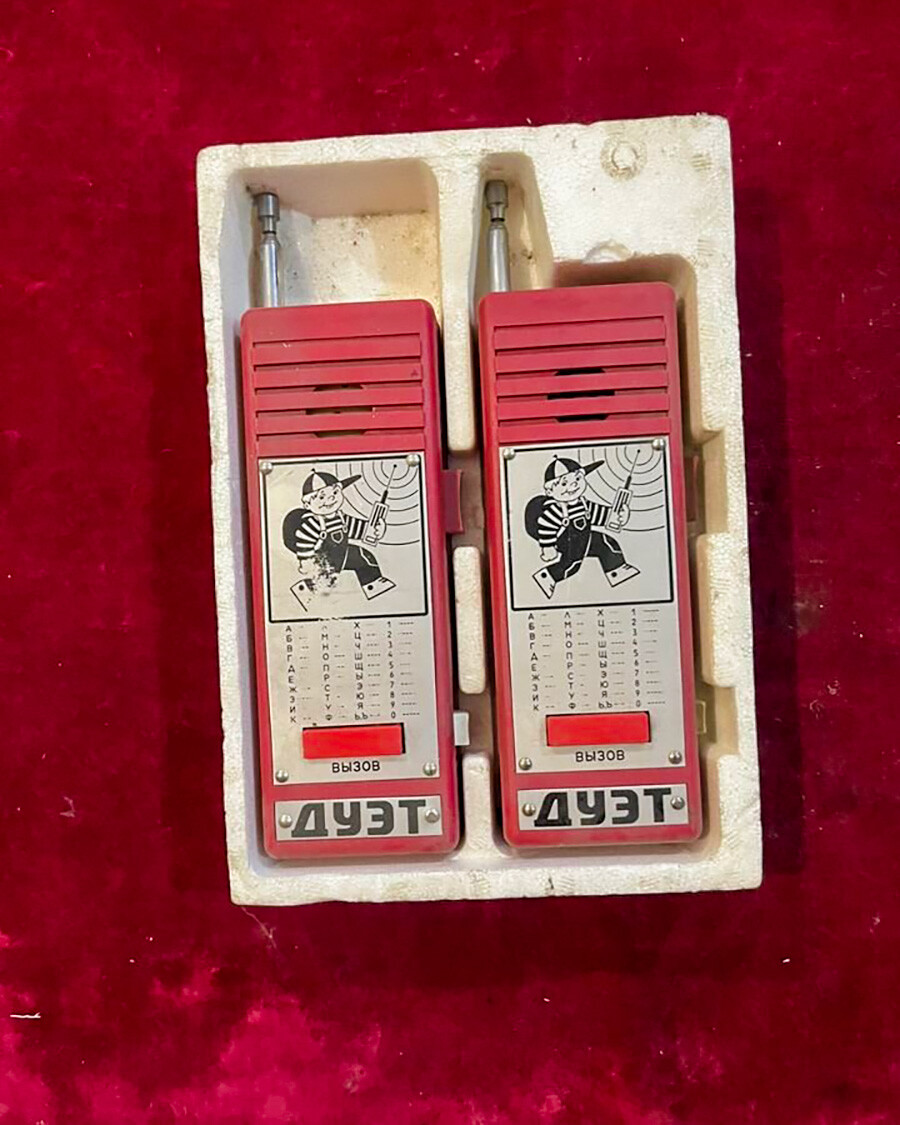
The 'Duet,' Soviet kids' wlakie-talkie
Avito.ruWalkie-talkies or duplex radio communication devices have been available to American consumers since the 1950s. However, they did not appear in the USSR until the very late 1980s and early 1990s. They were dubbed “children's radios” – ‘Sigma’, ‘Duet’ and ‘Radius’. The ‘Kolibri’ walkie-talkie, meanwhile, was designed to communicate not by voice, but by Morse code. The range of such duplex radios did not exceed 50-70 meters.
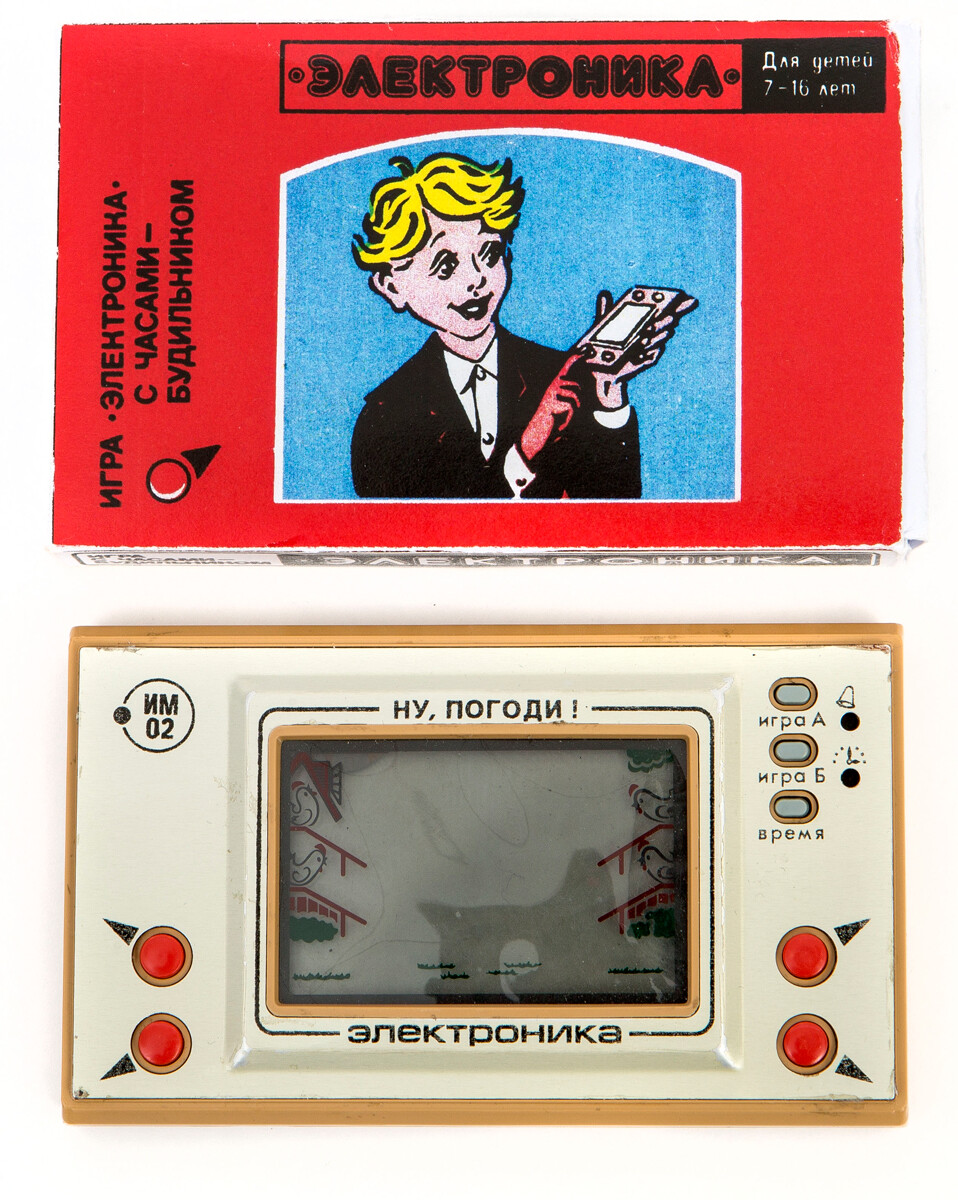
"Just you wait!" portable game console in original packing
Moscow Design MuseumAlmost every Soviet schoolkid from the second half of the 1980s onwards literally dreamed of owning one. It was copied – without a license, of course – from Nintendo's ‘Game & Watch’, a handheld electronic game series, which was produced from 1980 to 1991.
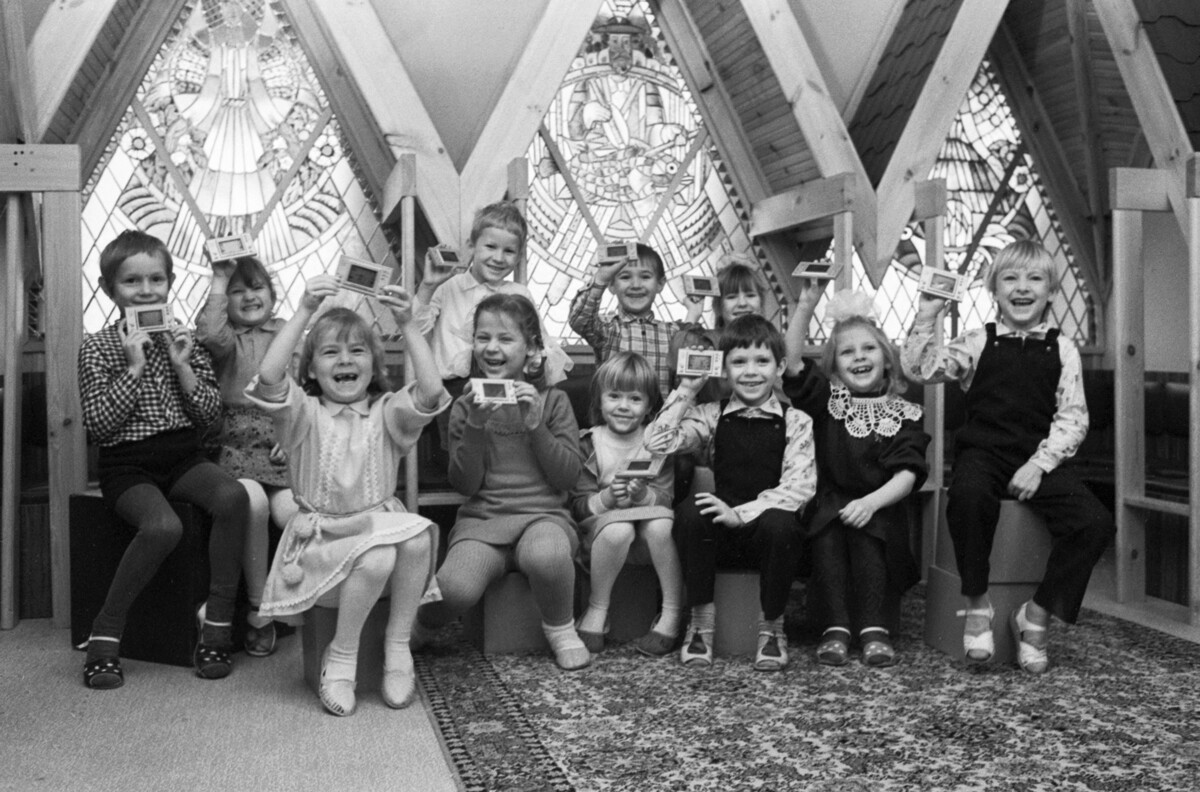
"Just you wait!" is children's favorite game, 1987
Dilis Antanas, Shlevis G./TASSThe essence of the game was the same – a wolf catches eggs in a hat or basket, which fall on him from four chickens placed in the corners of the screen. One point is added to the player for each egg caught. The eggs roll slowly at first, but, gradually, the pace of the game speeds up. If an egg falls to the ground, 1 "life" is deducted from the player, of which there are three in total. Like the original Nintendo ‘Game & Watch’, the game also had a clock and alarm clock.
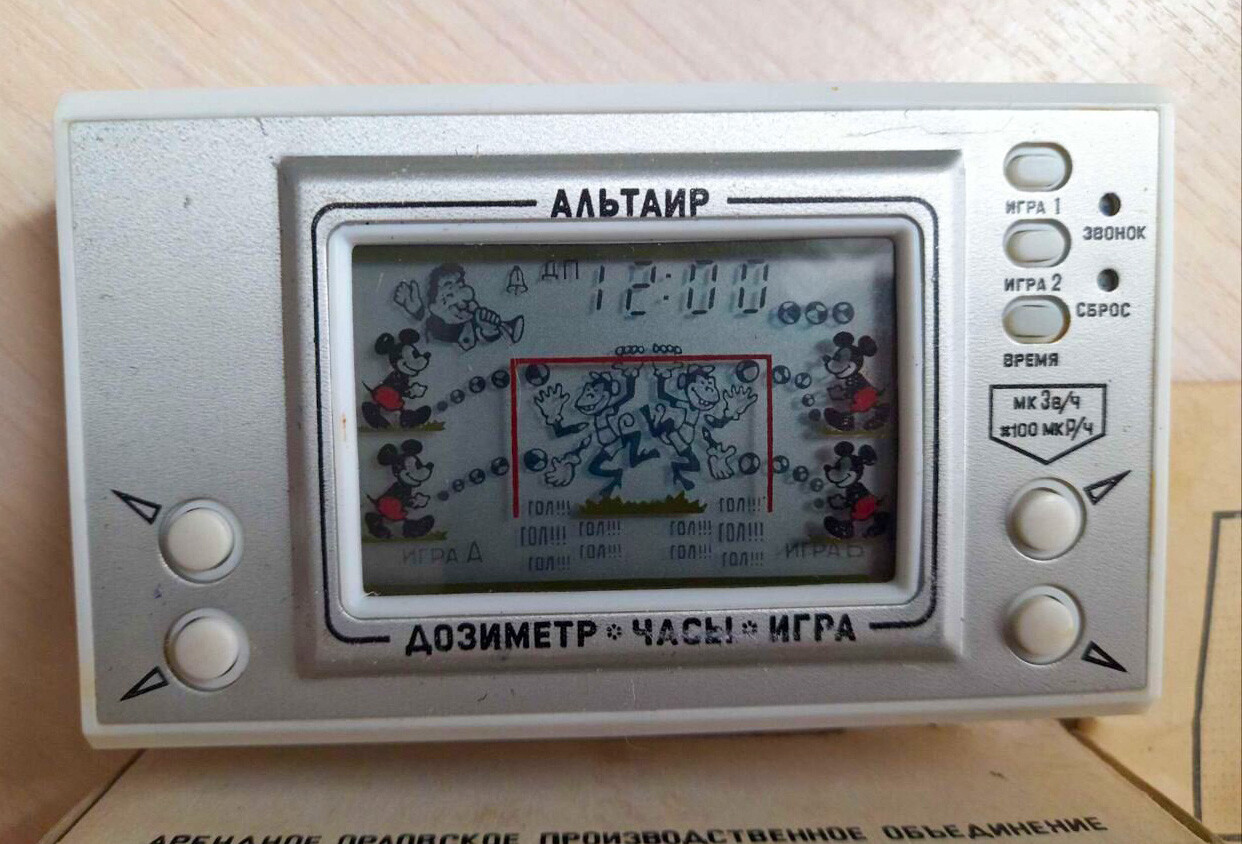
'Altair,' a portable game console with a dosimeter
Avito.ruAmong Russian children who actively played ‘Just you wait!’ in the 1990s, there was a legend that if you finished the game (reaching 999 points), "a cartoon would be shown". Alas, after 999 points, the score was reset to zero and just restarted from the beginning.
Incredibly, there was a modification of the game, which was created in 1991 at the Oryol ‘Scientific Device’ enterprise. It was called ‘Altair’ and had a portable radiation dosimeter built into it.
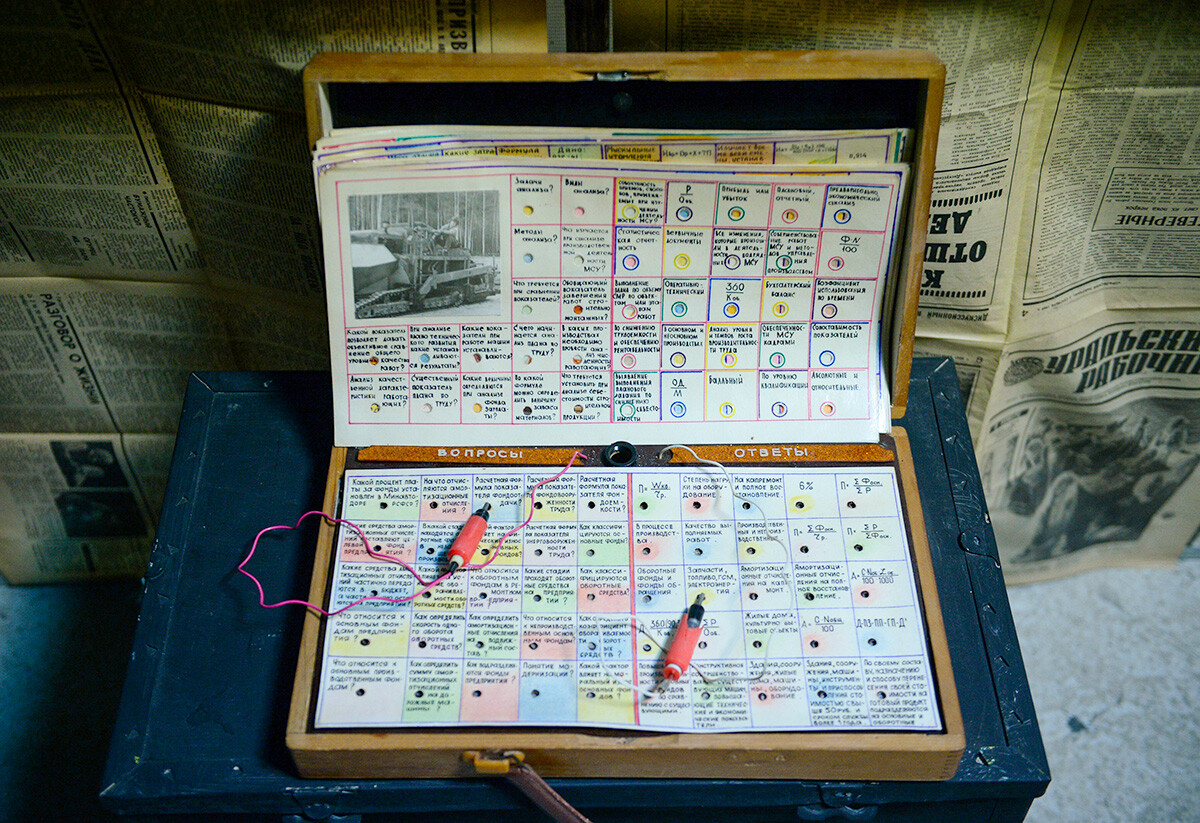
A typical electronic quiz found in Daily Life Museum in Yekaterinburg
Pavel Lisitsyn/SputnikProbably the simplest electrical gadgets for children were electronic quiz boards. They appeared in the mid-1950s and were produced until the late 1980s.
The design of these toys was different, but the essence was the same: a player had to answer a question by poking an electronic stylus into the correct hole, after which a flashlight-diode bulb would light up. Elementary mechanics fascinated many children back then. The questions could be changed by inserting different cards from the set into the cardboard sheet or the body of the quiz.
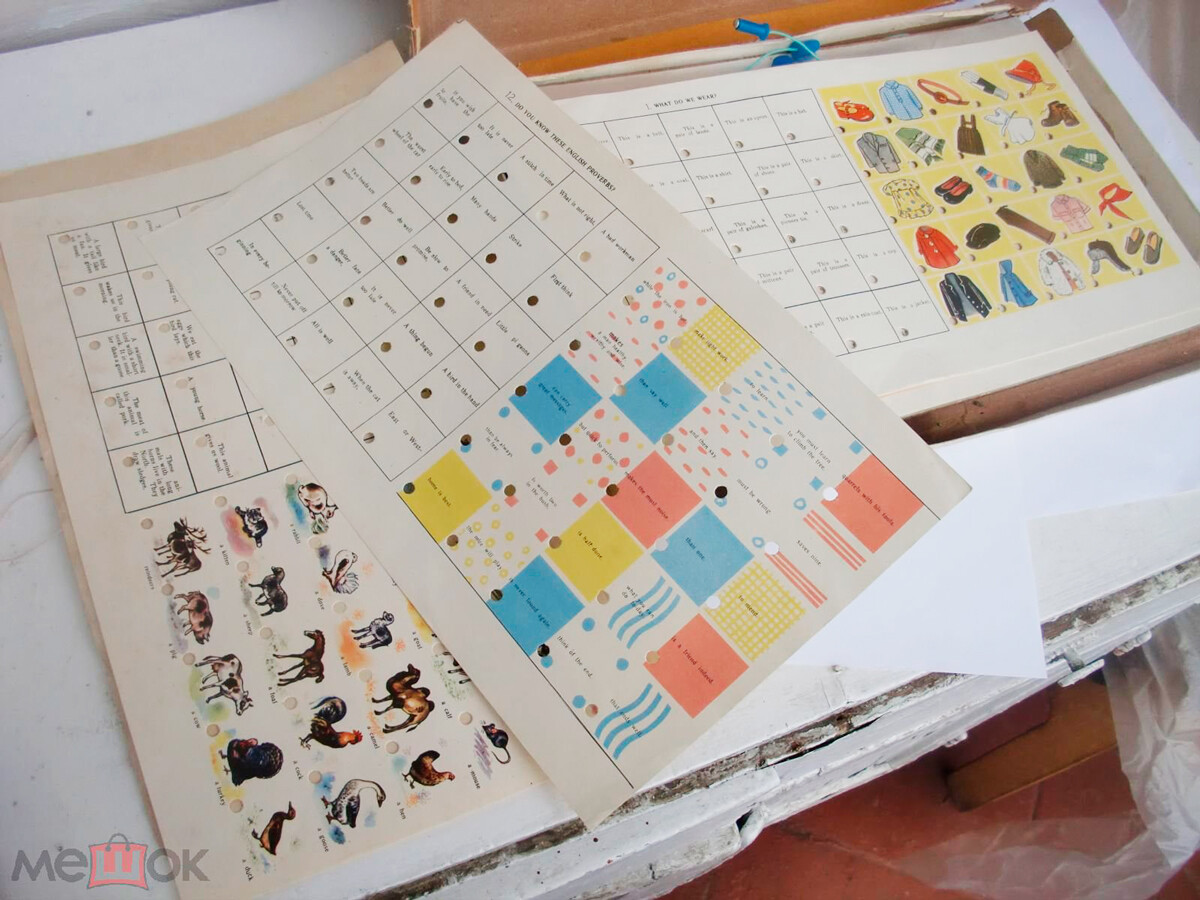
Electronic quiz sheets
meshok.netThe topics of quizzes were very different: geography, physics, wild and domestic animals, space, road signs, etc. A popular quiz was ‘Check Your Answer’, which helped to learn English words and grammar.
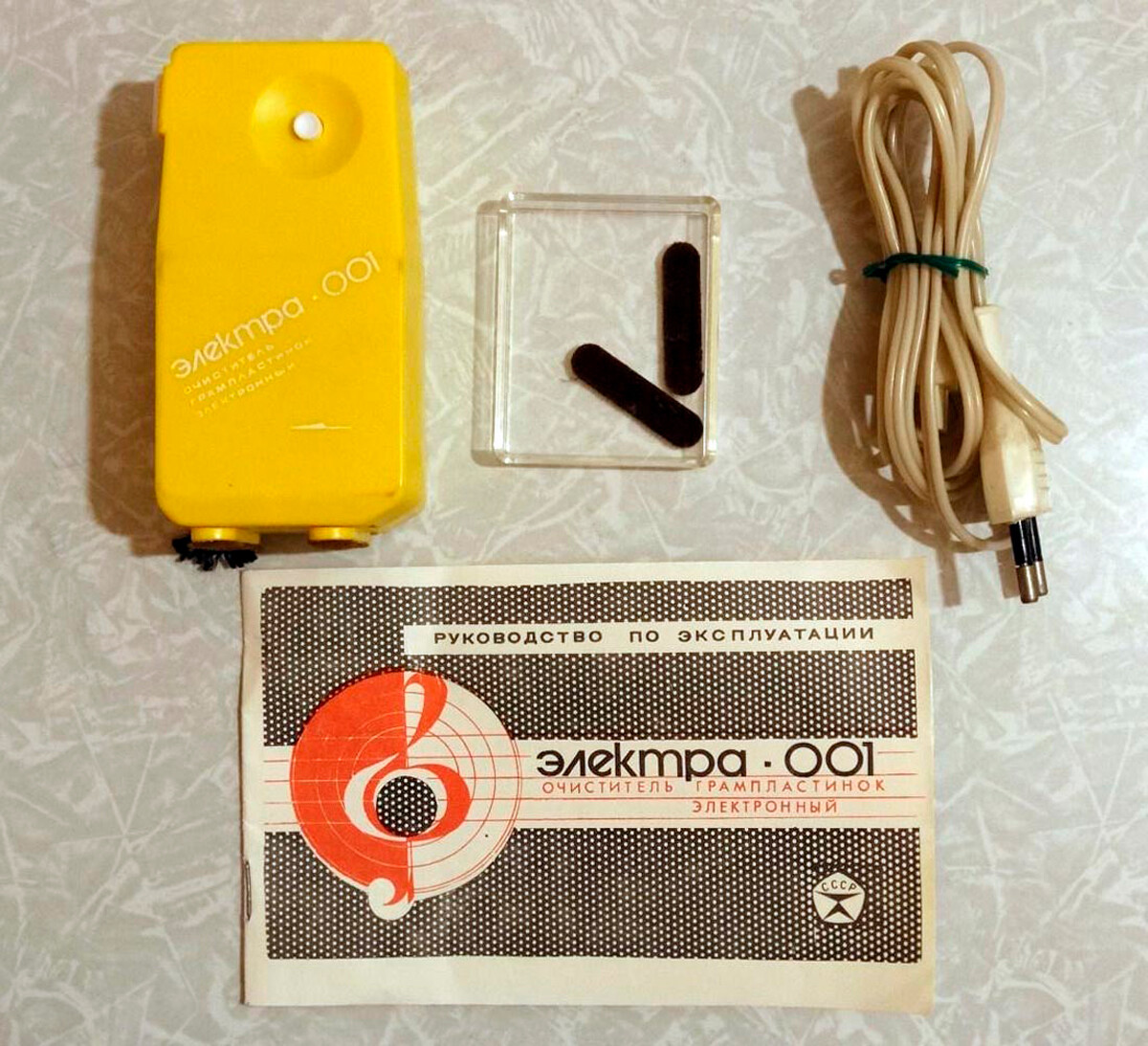
'Elektra-001' record cleaner
Avito.ruIn the USSR, there was a huge industry of vinyl records. Not only music, but also children's fairy tales, audiobooks and much more were published. One of the most exotic Soviet gadgets was the ‘Elektra-001’ electric gramophone record cleaner, which was produced at the Ryazan Radio Plant from 1990.
One had to plug it in, put it on the surface of a record and turn the record player on. In 20 seconds, the ‘Elektra-001’ would clean one side of the record and remove static electricity. The device weighed 250 grams, but wasn’t actually very useful – the connecting cord could catch on the edge of the record and drop the device on the vinyl surface. All Soviet music lovers preferred to clean vinyl with a velvet cloth, as the records were simply too valuable.
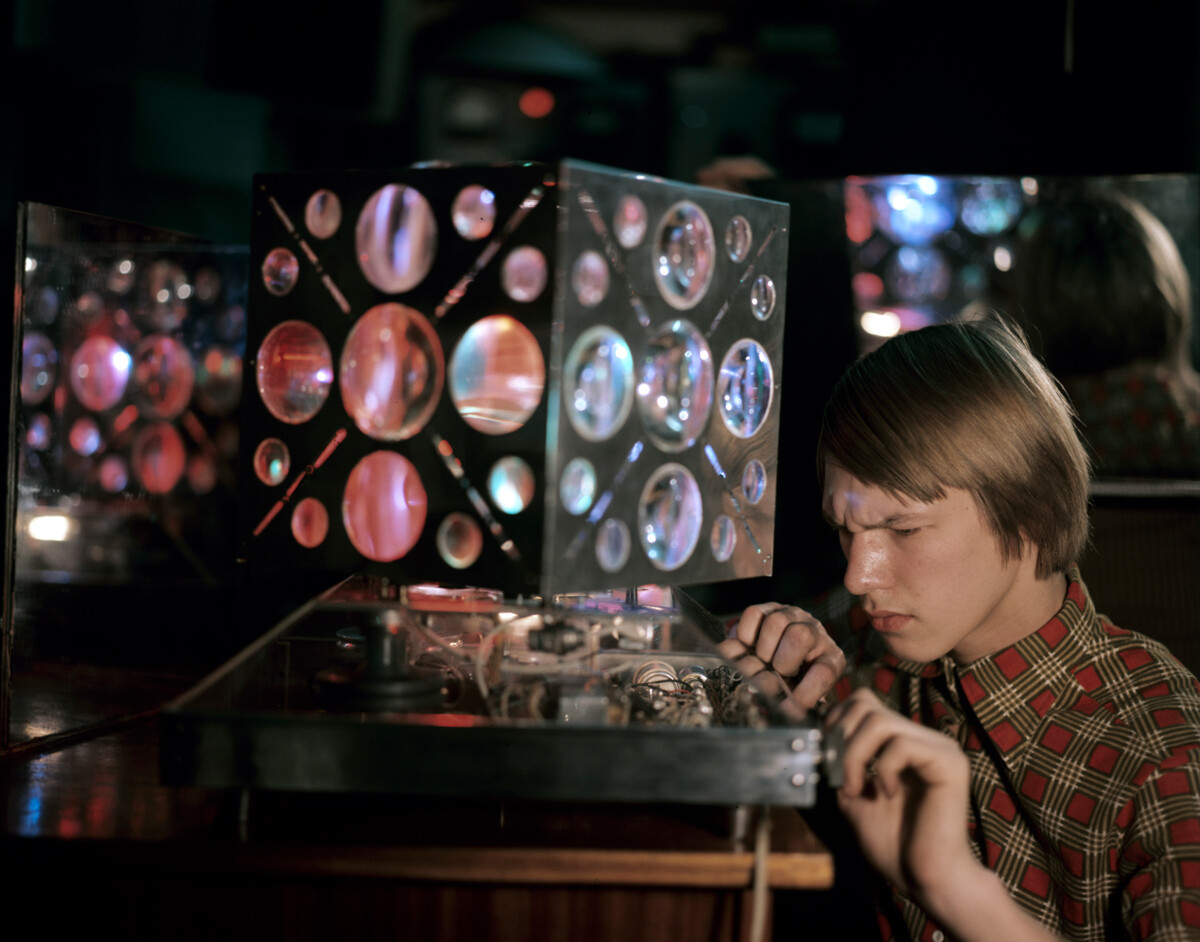
'Prometheus' light organ device
Petrukhin/SputnikThe world's first light organ device was created according to the idea of Russian composer Alexander Scriabin for the performance of his work ‘Prometheus’ (1910). In the 1960s-1970s, Soviet scientist Bulat Galeyev began to create light and music devices. In Kazan, he headed a special design bureau of the Kazan Aviation Institute, which was accordingly named ‘Prometheus’ in honor of Scriabin's work. On its basis, Galeyev developed many light organ devices.
Such a device "reads" the frequencies of the music sounds and, depending on the amplification of individual frequencies, feeds a proportional electric impulse to the incandescent lamps. As a result, the change of colors synchronizes with the rhythm of the music.
According to Roman Krylov, a researcher of light organs, about 80 different models of light organs were produced in the USSR in the 1960s-1970s. They were often produced by non-core military factories and sold virtually “by hand”, labeled as “conversion experimental batches”.
They were sold out instantly. In the Soviet countryside, there were almost no clubs and bars where people could go for a drink and listen to music. A light organ allowed you to organize a small show right at home and it was very popular. It also gave any party an interesting aesthetic with a “foreign” touch. And, in popular science magazines, you could even find electric scheme layouts that could be used to make a simple DIY light organ device yourself.
If using any of Russia Beyond's content, partly or in full, always provide an active hyperlink to the original material.
Subscribe
to our newsletter!
Get the week's best stories straight to your inbox